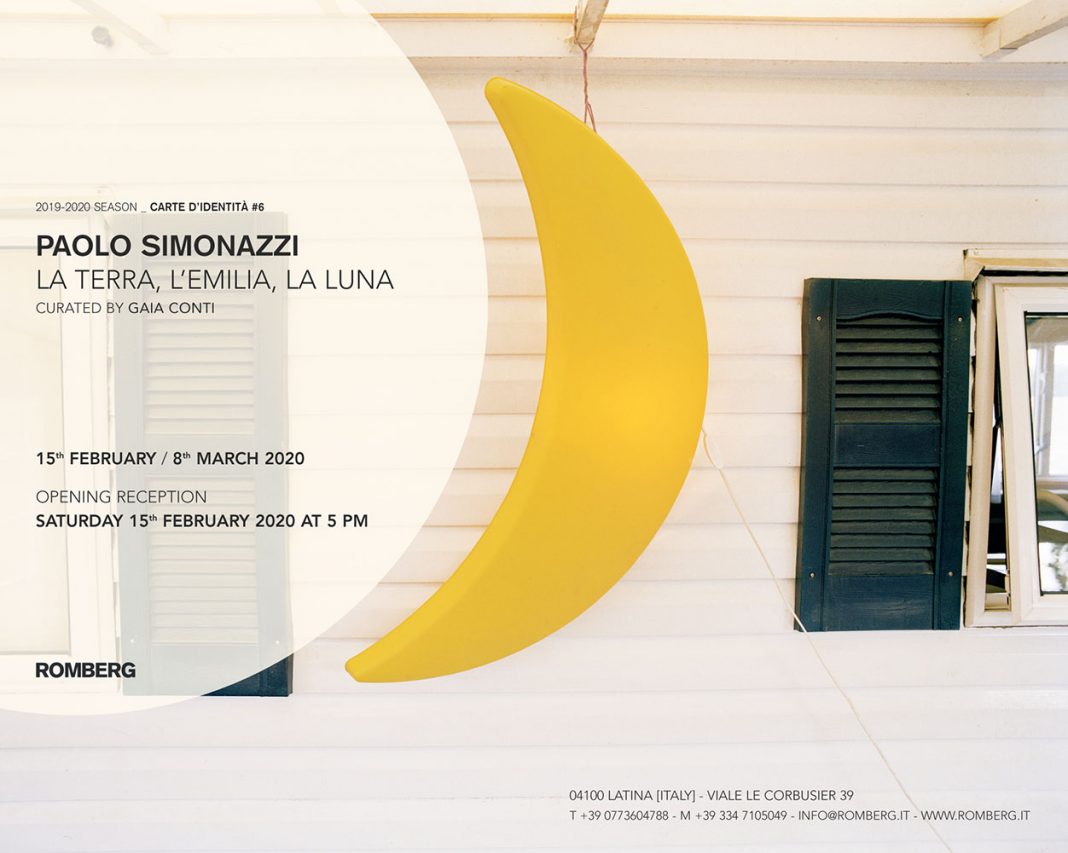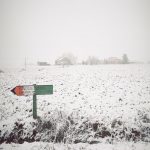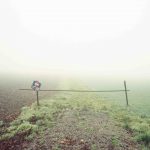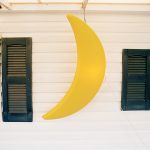Create an account
Welcome! Register for an account
La password verrà inviata via email.
Recupero della password
Recupera la tua password
La password verrà inviata via email.
-
-
- Categorie
- #iorestoacasa
- Agenda
- Archeologia
- Architettura
- Arte antica
- Arte contemporanea
- Arte moderna
- Arti performative
- Attualità
- Bandi e concorsi
- Beni culturali
- Cinema
- Contest
- Danza
- Design
- Diritto
- Eventi
- Fiere e manifestazioni
- Film e serie tv
- Formazione
- Fotografia
- Libri ed editoria
- Mercato
- MIC Ministero della Cultura
- Moda
- Musei
- Musica
- Opening
- Personaggi
- Politica e opinioni
- Street Art
- Teatro
- Viaggi
- Categorie
-
Paolo Simonazzi – La Terra, l’Emilia, la Luna
Un grande affresco, quello di Simonazzi, che abbraccia un arco di tempo lungo diversi anni e che coglie gesti e atmosfere, immortalandole all’interno del riquadro fotografico.
Comunicato stampa
Segnala l'evento
“Là in quella fetta di terra grassa e piatta che sta tra il fiume e il monte, fra il Po e l’Appennino.”, così come dice Guareschi, là nella Bassa sono ambientate le immagini fotografiche che Paolo Simonazzi presenta alla Romberg Arte Contemporanea di Latina in occasione della mostra “La terra, l’Emilia, la luna”, a cura di Gaia Conti. L’esposizione, che inaugura sabato 15 febbraio 2020, è inserita nell’ambito della rassegna “Carte d’identità” ideata dal gallerista Italo Bergantini e dal critico Gianluca Marziani.
Negli spazi della galleria una selezione di scatti che è a tutti gli effetti una summa di un lavoro corale e didascalico nell’accezione più consistente del termine: uno spaccato visivo di un mondo legato a doppio filo al passato, che ne conserva segni palesi e sbiaditi ricordi.
Un grande affresco, quello di Simonazzi, che abbraccia un arco di tempo lungo diversi anni e che coglie gesti e atmosfere, immortalandole all’interno del riquadro fotografico. Gli emiliani, persone semplici dai modi apparentemente un po' sbrigativi, li racconta nella loro complessità umana e culturale per rimando, attraverso i luoghi, le piazze, i portici, le case, i mestieri, i muri, i paesaggi.
Il titolo della mostra prende liberamente spunto da una canzone di qualche anno fa del progetto musicale del cantautore Vasco Brondi - Le luci della centrale elettrica - nato a Ferrara nel 2007. Insomma, di Emilia se ne respira parecchia. Tutto il fascino di una terra protetta dalla nebbia e dal gelo in inverno e invasa da una fiacca afa in estate; la provincia emiliana, i suoi tempi e ritmi dilatati, la sua commistione di culture e tradizioni distanti molti chilometri tra loro. Sono luoghi persi nell’anonimato, ma pieni d’identità, ambigui, per certi versi, ma aperti a molteplici interpretazioni, e dannatamente veri.
Come piccole incursioni nel racconto d’insieme Bell’Italia, Cose Ritrovate, Mondo Piccolo, Tra la via Emilia e il West, So near so far, Circo Bidone, si snodano nello spazio in un percorso lineare ed elegante composto da quattro immagini per ciascuna serie. L’accento si fa acuto e l’allestimento differente nel caso delle Icons of Liscio, che con il loro magnetico senso del kitsch, si guadagnano un’intera parete per descrivere nel dettaglio il paradigma musicale del piccolo mondo antico che ammicca curioso a una dimensione artistica riconquistata.
A chiudere il percorso, un lavoro che all’Emilia è legato con un fil-rouge di vita vera: Mantua Cuba, un’incursione, con tre cammei fotografici, nella piccola cittadina caraibica di Mantua fondata, secondo i racconti della tradizione orale, da un gruppo di marinai italiani che hanno ricostruito lì il ricordo della patria.
Ogni sequenza, con la sua peculiarità, riesce a delineare con estrema precisione una sfaccettatura insolita grazie ad un acume che difficilmente si riscontra in molti lavori fotografici. L’Italia è raccontata nel riflesso della sua provincia, una visione autentica, originata dall’io più intimo di un occhio fraterno che mette a fuoco la centralità sentimentale degli spazi. Un genere di fotografia che indaga il reale andando oltre la mera cronaca e ponendo grande attenzione alla scena, all’atmosfera, all’anima che si rivela con un ritmo rilassato e sornione.
Lo spazio narrativo di Paolo è il risultato della combinazione di elementi concreti a costruire la strada di una reminiscenza personale, una testimonianza che si definisce con l’infittirsi della nebbia tra i filari della Bassa. La cornice della storia è la storia stessa, una testimonianza fresca e malinconica al contempo che penetra nella profondità del vissuto e delle tradizioni della sua terra.
Guardando questi scatti sento levarsi una ballata evocativa e suggestiva, e quasi mistica, “tra una chiesa, un castello e una strada sterrata” - citando il testo della canzone che ci ha guidato per la mostra - una ritmica sotterranea che scomoda gli astri… e la luna, si sa, fa fare strani sogni.
/
"There in that slice of loamy, flat land that lies between the river and the mountain, between the Po and the Apennines.", just as Guareschi says, there in the Lowlands is where these photographic images are set, the ones that Paolo Simonazzi presents at Romberg Arte Contemporanea in Latina on the occasion of his exhibition "The Earth, Emilia, the Moon", curated by Gaia Conti. The exhibition, which opens on Saturday 15 February 2020, is part of the "Identity Cards" exhibition created by the gallery owner Italo Bergantini and the critic Gianluca Marziani.
Inside the gallery spaces, a selection of shots that is in all respects a sum of both a choral and captioned work in the most consistent acceptable meaning of the term: a visual cross-section of a world doubly linked to the past, which preserves clear signs and faded memories of it. A large fresco, that of Simonazzi, which embraces an arch of time spanning several years and which captures gestures and atmospheres, immortalizing them within the photographic frame. The people from Emilia, simple people with apparently somewhat hasty ways, are recounted in their human and cultural complexity by referring to the places, the squares, the arcades, the houses, the crafts, the walls, the landscapes.
The title of the exhibition is freely inspired by a song from a few years ago from the musical project of the singer-songwriter Vasco Brondi - The lights of the power station - born in Ferrara in 2007. In short, we can breathe in a lot of Emilia. All the charm of a land protected by fog and frost in winter and invaded by lacklustre heat in summer; the Emilian province, its dilated times and rhythms, its mixture of cultures and traditions which distance many kilometres from each other. They are places lost in anonymity, but full of identity, ambiguous, in some ways, but open to multiple interpretations, and damnably true.
Like small forays into the overall story Bell'Italia, Cose Ritrovate, Mondo Piccolo, Tra la via Emilia e il West, So near so far, Circo Bidone, they wind their way through space in a linear and elegant journey consisting of four images for each series. The accent becomes acute and the set up is different in the case of the Icons of Liscio, which, with their magnetic sense of kitsch, earn an entire wall on which to describe in detail the musical paradigm of the small ancient world that winks curiously at an artistic dimension that has been reconquered.
To end the journey, a work that is linked to Emilia by a common thread of real life: Mantua Cuba, an incursion, with three photographic cameos, in the small Caribbean town of Mantua founded, according to oral tradition, by a group of Italian sailors who reconstructed the memory of their homeland there.
Each sequence, with its peculiarity, manages to outline with extreme precision an unusual facet thanks to an acumen that is not easily found in many photographic works. Italy is recounted in the reflection of its province, an authentic vision, originated by its most intimate self, a fraternal eye that focuses on the sentimental centrality of spaces. A genre of photography that investigates reality by going beyond mere news and by paying great attention to the scene, the atmosphere, the soul that reveals itself with a sly, relaxed rhythm.
Paolo's narrative space is the result of a combination of concrete elements with which he builds the path of personal reminiscence, a testimony that is defined by the thickening of the fog between the vines of the Lowlands. The frame of the story is the story itself, a fresh and melancholy testimony that at the same time penetrates into the depths of the experience and the traditions of his land.
Looking at these shots I hear an evocative, suggestive and almost mystical ballad rise up "between a church, a castle and a dirt road" - citing the lyrics of the song that guided us for the exhibition - an underground rhythmic that disturbs the stars ... and the moon, as you know, gives us strange dreams.
Negli spazi della galleria una selezione di scatti che è a tutti gli effetti una summa di un lavoro corale e didascalico nell’accezione più consistente del termine: uno spaccato visivo di un mondo legato a doppio filo al passato, che ne conserva segni palesi e sbiaditi ricordi.
Un grande affresco, quello di Simonazzi, che abbraccia un arco di tempo lungo diversi anni e che coglie gesti e atmosfere, immortalandole all’interno del riquadro fotografico. Gli emiliani, persone semplici dai modi apparentemente un po' sbrigativi, li racconta nella loro complessità umana e culturale per rimando, attraverso i luoghi, le piazze, i portici, le case, i mestieri, i muri, i paesaggi.
Il titolo della mostra prende liberamente spunto da una canzone di qualche anno fa del progetto musicale del cantautore Vasco Brondi - Le luci della centrale elettrica - nato a Ferrara nel 2007. Insomma, di Emilia se ne respira parecchia. Tutto il fascino di una terra protetta dalla nebbia e dal gelo in inverno e invasa da una fiacca afa in estate; la provincia emiliana, i suoi tempi e ritmi dilatati, la sua commistione di culture e tradizioni distanti molti chilometri tra loro. Sono luoghi persi nell’anonimato, ma pieni d’identità, ambigui, per certi versi, ma aperti a molteplici interpretazioni, e dannatamente veri.
Come piccole incursioni nel racconto d’insieme Bell’Italia, Cose Ritrovate, Mondo Piccolo, Tra la via Emilia e il West, So near so far, Circo Bidone, si snodano nello spazio in un percorso lineare ed elegante composto da quattro immagini per ciascuna serie. L’accento si fa acuto e l’allestimento differente nel caso delle Icons of Liscio, che con il loro magnetico senso del kitsch, si guadagnano un’intera parete per descrivere nel dettaglio il paradigma musicale del piccolo mondo antico che ammicca curioso a una dimensione artistica riconquistata.
A chiudere il percorso, un lavoro che all’Emilia è legato con un fil-rouge di vita vera: Mantua Cuba, un’incursione, con tre cammei fotografici, nella piccola cittadina caraibica di Mantua fondata, secondo i racconti della tradizione orale, da un gruppo di marinai italiani che hanno ricostruito lì il ricordo della patria.
Ogni sequenza, con la sua peculiarità, riesce a delineare con estrema precisione una sfaccettatura insolita grazie ad un acume che difficilmente si riscontra in molti lavori fotografici. L’Italia è raccontata nel riflesso della sua provincia, una visione autentica, originata dall’io più intimo di un occhio fraterno che mette a fuoco la centralità sentimentale degli spazi. Un genere di fotografia che indaga il reale andando oltre la mera cronaca e ponendo grande attenzione alla scena, all’atmosfera, all’anima che si rivela con un ritmo rilassato e sornione.
Lo spazio narrativo di Paolo è il risultato della combinazione di elementi concreti a costruire la strada di una reminiscenza personale, una testimonianza che si definisce con l’infittirsi della nebbia tra i filari della Bassa. La cornice della storia è la storia stessa, una testimonianza fresca e malinconica al contempo che penetra nella profondità del vissuto e delle tradizioni della sua terra.
Guardando questi scatti sento levarsi una ballata evocativa e suggestiva, e quasi mistica, “tra una chiesa, un castello e una strada sterrata” - citando il testo della canzone che ci ha guidato per la mostra - una ritmica sotterranea che scomoda gli astri… e la luna, si sa, fa fare strani sogni.
/
"There in that slice of loamy, flat land that lies between the river and the mountain, between the Po and the Apennines.", just as Guareschi says, there in the Lowlands is where these photographic images are set, the ones that Paolo Simonazzi presents at Romberg Arte Contemporanea in Latina on the occasion of his exhibition "The Earth, Emilia, the Moon", curated by Gaia Conti. The exhibition, which opens on Saturday 15 February 2020, is part of the "Identity Cards" exhibition created by the gallery owner Italo Bergantini and the critic Gianluca Marziani.
Inside the gallery spaces, a selection of shots that is in all respects a sum of both a choral and captioned work in the most consistent acceptable meaning of the term: a visual cross-section of a world doubly linked to the past, which preserves clear signs and faded memories of it. A large fresco, that of Simonazzi, which embraces an arch of time spanning several years and which captures gestures and atmospheres, immortalizing them within the photographic frame. The people from Emilia, simple people with apparently somewhat hasty ways, are recounted in their human and cultural complexity by referring to the places, the squares, the arcades, the houses, the crafts, the walls, the landscapes.
The title of the exhibition is freely inspired by a song from a few years ago from the musical project of the singer-songwriter Vasco Brondi - The lights of the power station - born in Ferrara in 2007. In short, we can breathe in a lot of Emilia. All the charm of a land protected by fog and frost in winter and invaded by lacklustre heat in summer; the Emilian province, its dilated times and rhythms, its mixture of cultures and traditions which distance many kilometres from each other. They are places lost in anonymity, but full of identity, ambiguous, in some ways, but open to multiple interpretations, and damnably true.
Like small forays into the overall story Bell'Italia, Cose Ritrovate, Mondo Piccolo, Tra la via Emilia e il West, So near so far, Circo Bidone, they wind their way through space in a linear and elegant journey consisting of four images for each series. The accent becomes acute and the set up is different in the case of the Icons of Liscio, which, with their magnetic sense of kitsch, earn an entire wall on which to describe in detail the musical paradigm of the small ancient world that winks curiously at an artistic dimension that has been reconquered.
To end the journey, a work that is linked to Emilia by a common thread of real life: Mantua Cuba, an incursion, with three photographic cameos, in the small Caribbean town of Mantua founded, according to oral tradition, by a group of Italian sailors who reconstructed the memory of their homeland there.
Each sequence, with its peculiarity, manages to outline with extreme precision an unusual facet thanks to an acumen that is not easily found in many photographic works. Italy is recounted in the reflection of its province, an authentic vision, originated by its most intimate self, a fraternal eye that focuses on the sentimental centrality of spaces. A genre of photography that investigates reality by going beyond mere news and by paying great attention to the scene, the atmosphere, the soul that reveals itself with a sly, relaxed rhythm.
Paolo's narrative space is the result of a combination of concrete elements with which he builds the path of personal reminiscence, a testimony that is defined by the thickening of the fog between the vines of the Lowlands. The frame of the story is the story itself, a fresh and melancholy testimony that at the same time penetrates into the depths of the experience and the traditions of his land.
Looking at these shots I hear an evocative, suggestive and almost mystical ballad rise up "between a church, a castle and a dirt road" - citing the lyrics of the song that guided us for the exhibition - an underground rhythmic that disturbs the stars ... and the moon, as you know, gives us strange dreams.
15
febbraio 2020
Paolo Simonazzi – La Terra, l’Emilia, la Luna
Dal 15 febbraio al 07 marzo 2020
arte contemporanea
Location
ROMBERG ARTE CONTEMPORANEA
Latina, Viale Le Corbusier, (Latina)
Latina, Viale Le Corbusier, (Latina)
Orario di apertura
da lunedì a sabato ore 16 - 19:30
Vernissage
15 Febbraio 2020, ore 17-21
Sito web
Ufficio stampa
Romberg
Autore
Curatore
Autore testo critico
Progetto grafico














